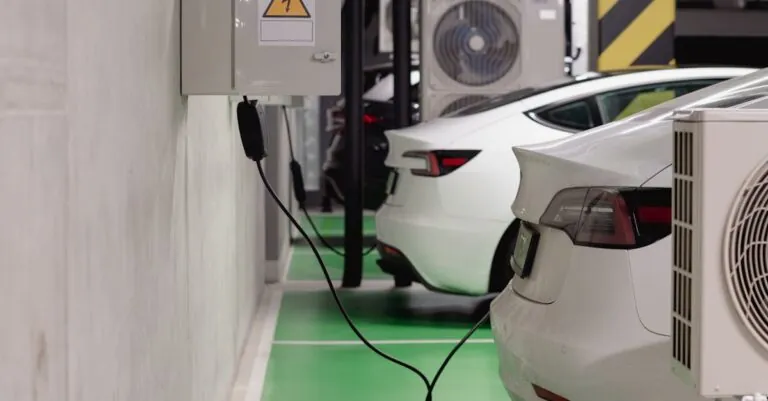Table of Contents
ToggleImagine blasting off into the cosmos only to realize you forgot to fill up the tank—awkward, right? Space travel isn’t just about rockets and astronauts; it’s also about keeping that fuel safe and sound. As humanity sets its sights on Mars and beyond, the importance of effective space fuel storage has never been clearer.
Overview of Space Fuel Storage
Space fuel storage plays a vital role in the success of space missions. Efficient storage solutions ensure that fuel remains stable and accessible during long-duration journeys. Engineers focus on developing systems that withstand extreme conditions, such as temperature fluctuations and vacuum environments.
Liquid fuels, like liquid hydrogen and methane, require specialized tanks. These tanks often include insulation to prevent evaporation. Advanced materials are crucial for maintaining structural integrity under high pressure.
Safety remains a top priority in fuel storage design. Containment measures help minimize leaks and explosions. Regular monitoring systems assist in detecting issues that could compromise fuel stability.
Innovative concepts are emerging to improve fuel storage efficiency. Some research explores the use of nanomaterials, which could enhance storage capacities. Others investigate cryogenic storage options, which preserve fuel at significantly low temperatures.
Data from previous missions demonstrates the importance of reliable fuel storage. Inadequate fuel management can lead to mission failures, highlighted by instances of limitations in fuel reserves. By addressing these challenges, space agencies can improve mission outcomes, especially for ambitious projects targeting Mars.
Types of Space Fuels
Space missions utilize various types of fuels, each with distinct properties and applications. Understanding these fuels is crucial for developing effective storage solutions.
Liquid Fuels
Liquid fuels, including liquid hydrogen and liquid methane, are commonly used in rocket propulsion systems. These fuels require special tanks equipped with insulation to prevent evaporation. Engineers design these tanks to maintain low temperatures and high pressures, ensuring operational stability. Efficiency in liquid fuel storage directly impacts mission success. Advanced materials help maintain structural integrity, even under extreme conditions. For instance, during the journey to Mars, secure storage of these fuels becomes essential for propulsion and maneuverability.
Solid Fuels
Solid fuels present a different approach to propulsion. They offer a higher energy density and easier storage compared to liquids. Propellant grains or pellets can be manufactured with precise compositions, providing tailored thrust profiles. Their stability during transport is an advantage for missions requiring long-term storage. Solid fuel systems also minimize the risk of leaks, ensuring safer handling. Despite their benefits, challenges include slower thrust control and flexibility during flight, making them suited for specific mission profiles.
Gaseous Fuels
Gaseous fuels, such as hydrogen gas, play a vital role in certain propulsion systems. While less common as primary fuels, they provide excellent energy when combusted with other elements. Storage options include high-pressure tanks designed to accommodate gases under extreme conditions. These tanks require robust materials to prevent rupture. Applications in fuel cells and hybrid propulsion systems highlight their versatility. Gaseous fuels support efficiency for long-duration missions, making them relevant in future space exploration.
Storage Technologies
Storage technologies play a crucial role in the effective management of space fuels. As missions evolve, so does the need for advanced solutions that ensure stability and accessibility.
Cryogenic Storage Systems
Cryogenic storage systems maintain fuels like liquid hydrogen and methane at extremely low temperatures. These systems utilize highly insulated tanks to prevent evaporation. By minimizing heat transfer, engineers ensure optimal fuel preservation during long journeys. Advanced materials designed to withstand high pressure are essential, providing reliability under the extreme conditions of space. Regular monitoring systems enhance safety by detecting potential leaks or temperature fluctuations. Innovations in nanotechnology continue to improve these storage options, making them more efficient and secure.
Pressurized Storage Solutions
Pressurized storage solutions cater to the unique needs of gaseous fuels. These systems store fuels such as hydrogen gas in high-pressure tanks, allowing for more compact designs. Structures must endure significant internal pressures while remaining lightweight, which is critical for mission success. Safety measures incorporate robust containment systems to prevent leaks and withstand operational stresses. Incorporating smart monitoring technology ensures that any potential issues are promptly addressed. The versatility of these storage solutions supports hybrid propulsion systems, enhancing overall mission efficiency.
Challenges in Space Fuel Storage
Space fuel storage presents significant challenges that must be addressed to ensure successful missions. Various factors impact the reliability and safety of fuel storage systems in the harsh conditions of space.
Safety Concerns
Safety remains a paramount consideration in space fuel storage. Containment measures must be robust to prevent leaks and explosions during transportation and operation. Regular monitoring systems play a critical role in detecting potential issues early. Advanced materials also contribute to enhancing structural integrity. For instance, materials resistant to extreme temperatures and pressure improve safety under challenging conditions. Failure to prioritize safety measures results in catastrophic mission failures, further emphasizing the need for rigorous testing and validation processes.
Efficiency and Performance
Efficiency and performance are essential for effective fuel storage solutions. Engineers strive to optimize storage systems that prevent evaporation and maintain stability. Innovative technologies, such as cryogenic storage, ensure that fuels like liquid hydrogen remain at incredibly low temperatures. Effective thermal insulation contributes to minimizing energy loss, thus enhancing overall performance. Moreover, incorporating smart monitoring technologies improves responsiveness and safety, allowing for quick adjustments. Missions aimed at Mars and beyond demand top performance, making these advancements critical to success.
Long-Term Storage Issues
Long-term storage poses unique challenges in space missions. Ensuring that fuels remain stable over extended periods demands advanced techniques and materials. Specialized tanks designed for both liquid and gaseous fuels provide necessary protection from environmental factors. Deterioration risks must also be addressed to prevent degradation affect fuel quality. Strategies such as regularly scheduled maintenance and inspection help mitigate potential issues. Addressing long-term storage concerns ensures that fuels remain viable for future missions, directly influencing mission outcomes.
Future Trends in Space Fuel Storage
Future trends in space fuel storage focus on enhancing safety and efficiency. Engineers are prioritizing innovations that respond to the unique challenges of space environments.
Advances in Material Science
Materials used in fuel storage systems are evolving. Researchers are developing nanomaterials that exhibit remarkable strength and thermal resistance. These materials can withstand extreme temperatures and pressures, thus improving structural integrity. Improved insulation techniques are also on the horizon. Innovations in composites enhance durability while reducing weight, crucial for spacecraft design. Higher energy efficiency and optimal performance are direct outcomes of these advancements.
Innovations in Storage Techniques
Storage techniques are advancing rapidly to meet mission demands. Cryogenic systems are being enhanced for better fuel preservation at ultra-low temperatures. Smart monitoring technologies are increasingly integrated into storage solutions. These technologies allow for real-time tracking of fuel conditions, increasing safety and reliability. Modular storage designs are gaining traction, offering flexibility for different mission profiles. Safety measures against leaks and explosions are constantly refined, ensuring missions can operate without risks related to fuel management.
Conclusion
Effective space fuel storage is essential for the success of future missions. As humanity sets its sights on Mars and beyond, innovative storage solutions must address the unique challenges of extreme environments.
Engineers are developing advanced materials and technologies that enhance safety and efficiency. The integration of smart monitoring systems and modular designs is paving the way for more reliable fuel management.
By prioritizing these advancements, space agencies can ensure that fuel remains stable and accessible, ultimately improving mission outcomes and supporting ambitious exploration goals. The future of space travel depends on overcoming these challenges to unlock new frontiers in our universe.







